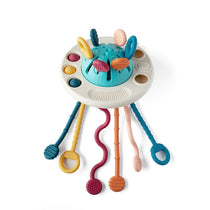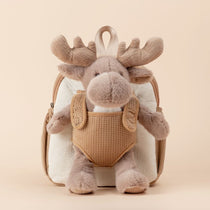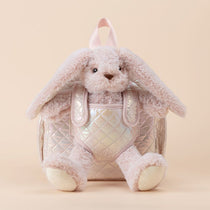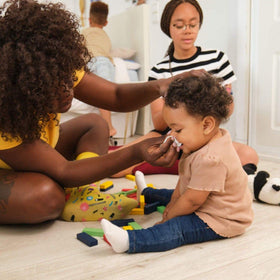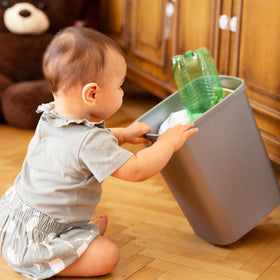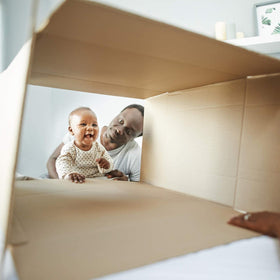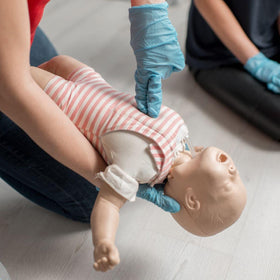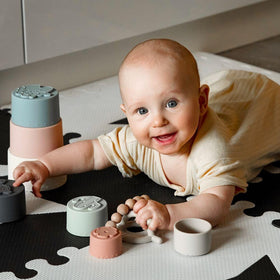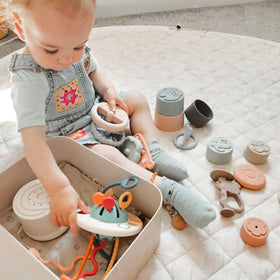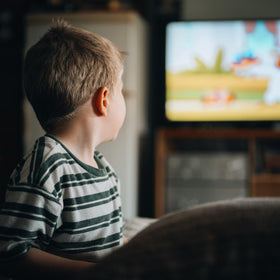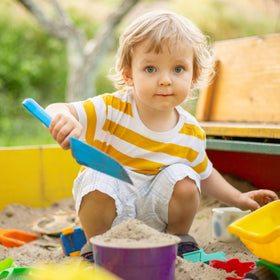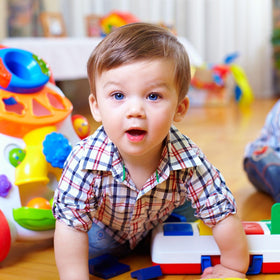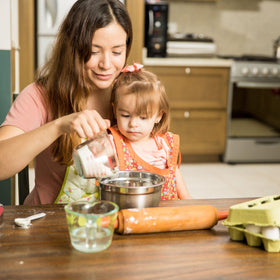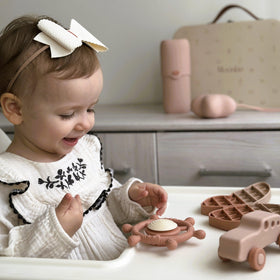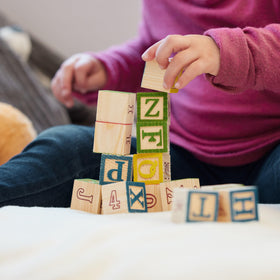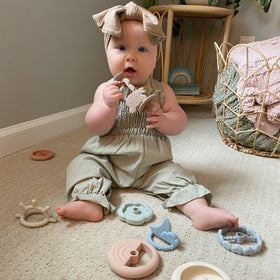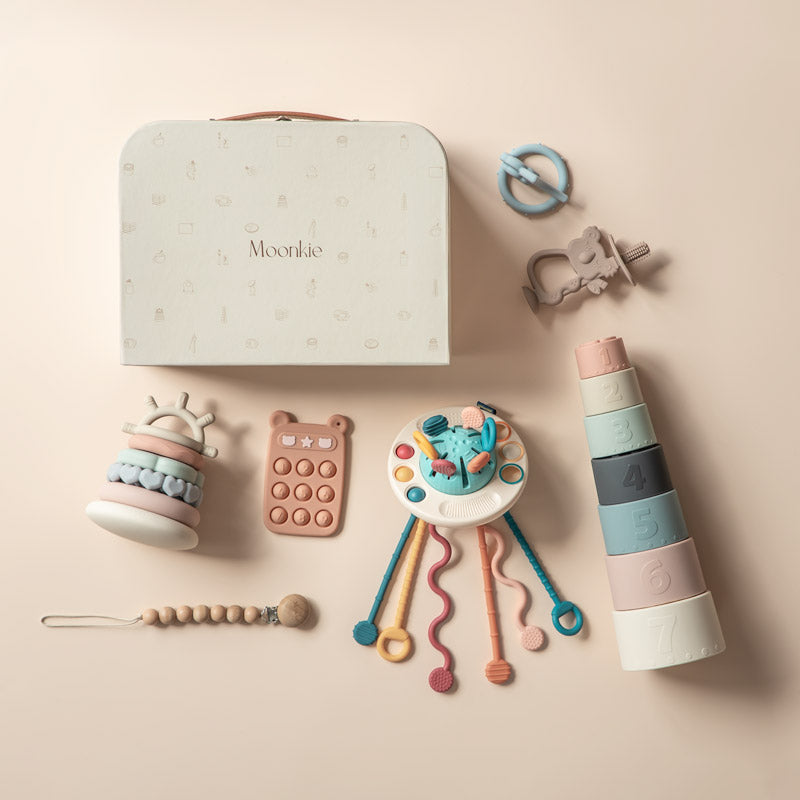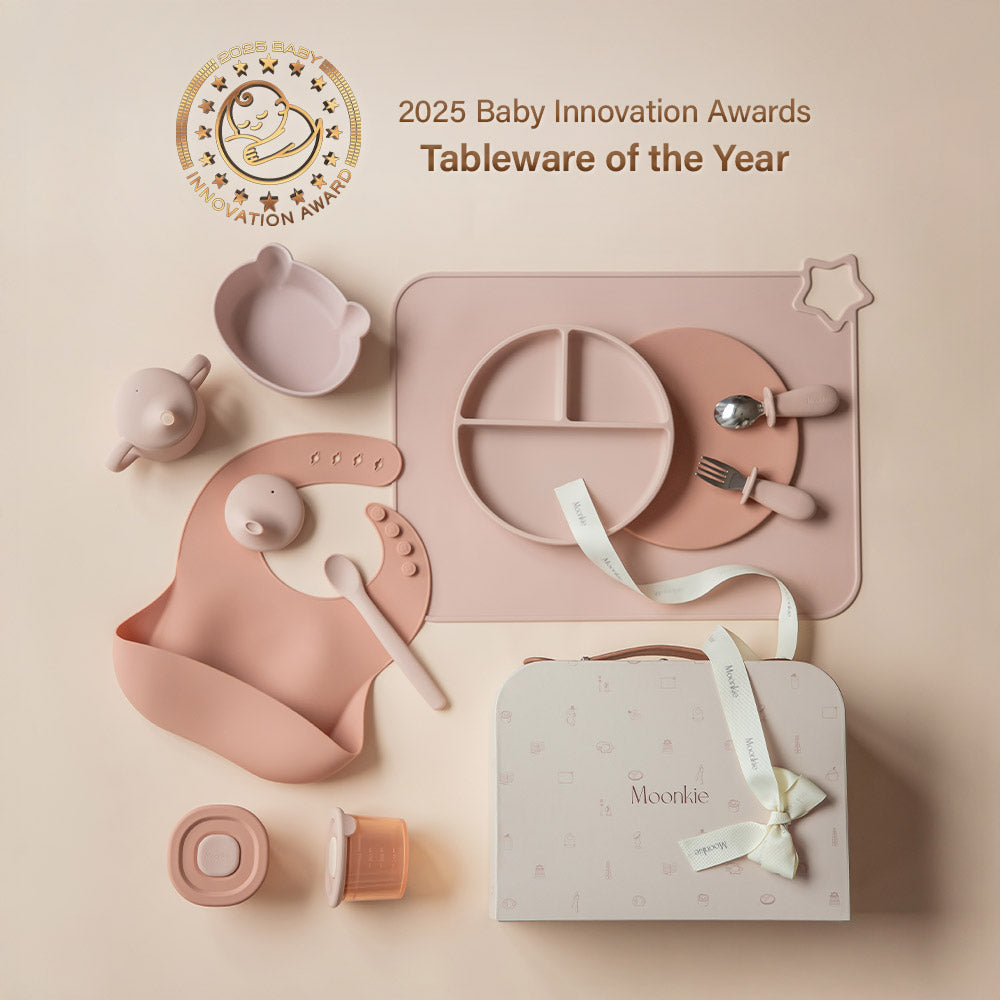Many schoolteachers discuss the difference in children's desire to learn now compared to when they began their teaching careers. Lack of interest, not caring about fixing mistakes, and agitation about answering problems are just a few issues these teachers note. Are there any activities parents can do before school to keep their children interested in learning?
The desire to learn is innate in young children, but it often wanes if not supported with positive reinforcement. Nurturing children's intrinsic motivation for learning and fostering a growth mindset from infancy works wonders for setting a child up for success in school and life.
Most of the groundwork for a growth mindset is laid by parents in early childhood. Let's dive into how!
Babies Are Born to Learn
From birth, babies are learning. They primarily learn through their senses (seeing, hearing, tasting, touching, and smelling), even though it seems like they are not doing much more than eating, crying, sleeping, and pooping (source).
The first 12 months are the most rapid period of development a human being experiences outside the womb. Babies typically triple their birthweight, grow about 10 inches in length, and begin walking and babbling by their first birthday (source)!
I provide a brief rundown of the first year of development, including charts of physical milestones and sleep needs, in 7 Things Every Parent Should Know About the Early Stages of Child Development.
While your baby is doing all that growing and developing, she is building her understanding of the world through observation and, later in the year, toying with cause and effect. The best way to do this is through playing!
Playing is crucial for baby development because it is a low-stress, tactile way to engage the senses and explore the world. You cannot lecture a baby. You can't even set rules and expect her to follow them for fear of the consequences! She just doesn't have that understanding during the first year.
So, learning about the world and common sense through play with you and sensory exploration is the way to go. Under your watchful eye, your little one will learn about "good" and "bad" temperatures, textures, motions (like slamming blocks together), sounds, and so much more.
If babies are born to learn, and they learn best through observation and play, when do babies start playing? Can newborns benefit from toys and playtimes? I delve into that in Are Newborns Too Young for Toys?
Toddlers Continue Learning Rapidly
Toddlers continue to learn rapidly because they build 1 million new neural connections per second until around three years old (source). This astounding rate of development continues that innate desire to learn, primarily through the senses but also through more mature observational learning.
Toddlers and young children learn by "monkey see, monkey do." They like to experiment with talking like you, walking like you, and doing the things you do. This is the period when you begin to see a lot of sass, attitude, resistance, independence, and big mood swings.
Babyhood and toddlerhood environments and experiences have a significant impact on shaping a child's brain structure and processes for the rest of life (source).
Focusing on making as much of your child's environment and experience as positive as possible (loving, supportive, rich in variety, close to you, etc.) in the first three years significantly contributes to fostering a growth mindset and kindling intrinsic motivation.
Do Preschoolers Want to Learn As Much As Toddlers Do?
Preschoolers still crave individual attention and learning, and parents remain the most significant influence on them. Although 4- and 5-year-old brains are not developing as rapidly as they did in the first three years, they are still forming connections at an incredible rate.
By the time a child is 5 years old, their brain has grown to approximately 90% of its eventual adult size (source)! So, everything you do to nurture that growth with support, presence, calmly handling big emotions, reading together, and loving on your child provides the positive influence your child needs to thrive.
Preschoolers yearn for connection with their parents, so when their parents get excited about learning, reading, exploring, and other positive educational experiences, they will often become excited, too.
However, suppose their parents are exhausted all the time and refuse or complain about educational opportunities. In that case, many children will take the hint and begin viewing such things as a burden to be avoided or resisted.
Likewise, if educational activities and experiences seem stressful to the parents because the children are not doing things "right," such activities will become potential failures or stressors to shrink away from (the very opposite of a growth mindset).
Regardless of whether positive or negative environments and experiences surround preschoolers, they are still learning. They either learn to react and shy away from challenges and the unknown or to proactively tackle them.
Do Kindergarteners Want to Learn?
Yes, kindergarteners want to learn. However, the experiences and environment during their early years have already shaped their attitude toward learning, challenges, and connecting with others.
A child's attitude and willingness toward learning are not set in stone at this age. However, it will take more work, consistency, and patience to help your child build a desire to learn if it has previously been smothered because she is more complicated now!
If you are worried about having wasted your child's early development years--don't worry! Being present is more important than being perfect. But we all have questions about our parenting in the back of our minds. Read more in Am I Ruining My Children? Honest Questions Every Parent Eventually Asks.
Parents still hold a significant place of influence in their kindergarteners' lives, but they are also increasingly open to the influence of teachers, friends, and other adults. Thus, rekindling their kindergartners' desire to learn is a multi-person task that unfolds over time.
The Key to a Life-Long Desire to Learn: Growth Mindset
A growth mindset is one's belief that intelligence can be cultivated through intentional learning and effort (source). It is believing one can learn whatever he or she needs to know for the next step or season of life by simply putting in the effort and time.

Having a growth mindset is nifty for adaptability, academics, and problem-solving. For example, a child with a growth mindset will meet a challenge with enthusiasm and a can-do attitude, while another child may shrink back from the challenge, resist it, or demand help from an adult.
An adult with a growth mindset views hard work as a path to mastery and extracts valuable insights from setbacks. A growth mindset will also embrace challenges as opportunities for growth and value persistence. Moreover, the process of learning and working hard becomes more critical than the result.
As parents, we are responsible for laying the foundation of a growth mindset in our children. We are their first teachers, greatest supporters, most involved investors, and most reliable source of consistent feedback.
However, many of us didn't have a growth mindset instilled in us, so we must work on fostering it within ourselves as we strive to instill it in our children.
What Is Intrinsic Motivation?
Intrinsic motivation is the willingness to do a task "for the heck of it," just because you can, or for inherent satisfaction. It means doing something because you enjoy it, find it fulfilling, or feel satisfaction doing it--not because you get some kind of external reward (source).
An intrinsically motivated person will undertake challenging tasks because they enjoy them, even if it means sacrificing time, money, comfort, and effort. For example, someone who volunteers at a local soup kitchen to cook meals for years, despite health challenges, disrespect, and the time cost, probably enjoys serving others.
Another person may write a free blog article, record a podcast, or publish a YouTube video every week for months or years with little to no increase in traffic, views, or compensation. Why would they keep that up? Either they believe it will grow into something bigger one day, or they enjoy the work (or both).
When a child enjoys learning, it becomes easier to learn. Children are born with a built-in motivation to learn. However, keeping that desire burning bright throughout the school years and on into adulthood takes effort.
Growth Mindset vs. Intrinsic Motivation
Every human being has an intrinsic motivation for something, but not all have a growth mindset. A person's existing intrinsic motivation can be shaped and directed by both positive and negative environments, experiences, and relationships, whereas one's growth mindset is cultivated through intentional work.
So, while intrinsic motivation is being shaped in children through living life and interacting with others, a growth mindset must be fostered through an intentional focus on embracing challenges, learning from mistakes, and prizing effort over results.
A growth mindset doesn't come naturally, but intrinsic motivation does. Yet, staying intrinsically motivated to learn, work hard, and do other "boring" things takes intentional steps. Helping your child stay motivated to learn and fostering a growth mindset can be done with many of the same steps.
5 Tips for Instilling a Growth Mindset in Your Child
A growth mindset and intrinsic motivation both emphasize the process over the outcome. So, instilling a growth mindset in your child while keeping his intrinsic motivation to learn alive can be done by nurturing a family culture that appreciates and enjoys the journey over the result.

As complicated as it sounds to shape your family culture, it boils down to being intentional and consistent.
1. Celebrate Progress Rather Than Outcomes
Successful outcomes give a rush of excitement and satisfaction, but those feelings are fleeting. Before long, you're on to the next goal. For instance, getting a raise at work is nice, but you'll soon set your eyes on the next promotion, thinking, "When I get to that level, I'll be happy."
The trouble is that goals like this are often moving goalposts because humans are rarely content with the same thing for long — even if they worked hard to achieve it. The secret to being content with what you have is enjoying the process of striving and growing toward your goals more than achieving them.
Cultivating that desire begins at home. Tell your child, "Wow, you are such a hard worker!" rather than, "Good job finishing your chores!" Compliment your child's creativity rather than the finished coloring page. Emphasize the effort and the enjoyment of doing things rather than focusing on the finished product or achievement.
If you want some ideas for how to do this well with your child, read Encouraging Resilience: 10 Effective Ways to Build Resilience From the Start.
2. Actively Seek Feedback From Others and Each Other
Asking for and welcoming feedback from others openly is vital to showing your child how to accept feedback with grace. If you always mutter about someone's critique behind closed doors, your child will likely consider feedback as an attack or unwarranted commentary later in life.
Moreover, demonstrating that feedback is a learning opportunity sets an example for your child to follow when she begins receiving feedback from teachers at school, coaches in sports, or you after her teenage antics.
To be clear, I am not suggesting that you should welcome emotional manipulation, ugly or angry rants against you, or rude remarks dealt in spite. Teach your child to value feedback from mentors and trusted family and friends who genuinely care for your well-being, not from bullies and strangers who have no care for you.
3. Surround Your Family with Growth-Minded Individuals and Families
Modeling a growth mindset is vital to helping your child cultivate one, but surrounding your family with growth-minded individuals and families is equally critical. Your child will mimic what they see and hear.
Interestingly, adults need to surround themselves with growth-minded individuals to become more growth-minded people. Likewise, surrounding oneself with highly driven and successful individuals will likely result in being highly driven and successful (source).
Finally, striving to help your child develop a growth mindset and be intrinsically motivated for good things can be exhausting. It takes a lot of intentional work! However, surrounding yourself and your family with other families who are striving in the same direction will make this journey more doable!
4. Encourage a Time for Journaling
Journaling works wonders for collecting thoughts, articulating feelings and ideas, and calming down. It is also an excellent practice for stepping into a growth mindset!
There is a fantastic journal designed for kindergarteners and elementary-school-aged children called Big Life Journal . Based on brain science, the daily journaling activities help children put words to their thoughts and feelings, enabling them to become more resilient and confident.
Otherwise, having a family journaling time to answer a question or prompt is a neat way to understand your child better as she learns to express herself.
5. Be Patient and Persistent in Word and Deed
Growth toward any goal takes time and effort. For example, your child's ability to express his emotions appropriately and separate feelings from thoughts will develop over time. However, your patient presence will make that development smoother.
As a parent, your words and actions mean more to your young child than anyone else's. The time you spend with your child, the things you set aside for them, the words you say, and the experiences you share (both daily and unusual) are integrally meaningful.
Taking the time to consider the weight of your words can help you establish better habits, especially when it comes to managing anger. For examples of "better" ways to say things, read Be Careful Mommy Daddy What You Say: Building Your Child's Identity.
In a Nutshell
How can we instill intrinsic motivation for learning and working hard while cultivating a growth mindset in our children? Ultimately, it comes down to working at these things in ourselves and making them a part of our family culture. This is easier said than done! How do you do it in your family?





